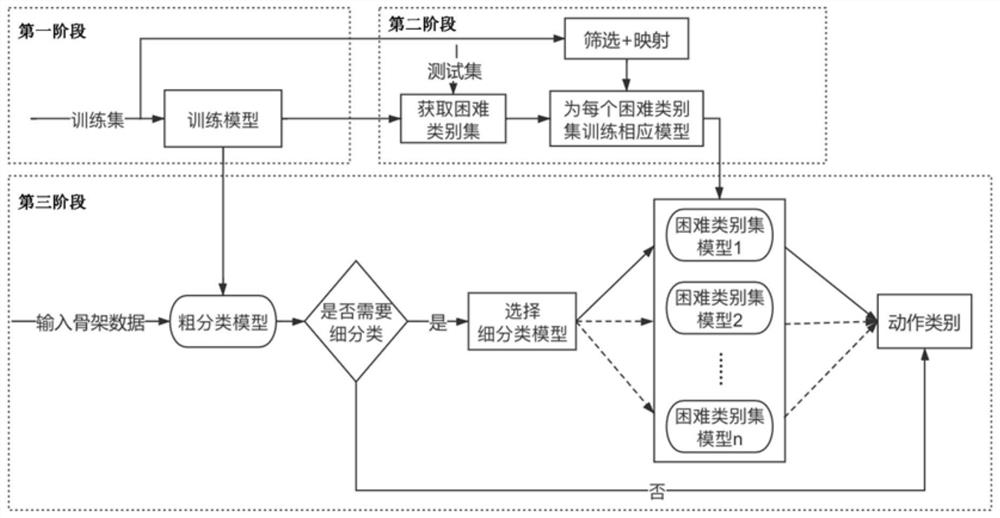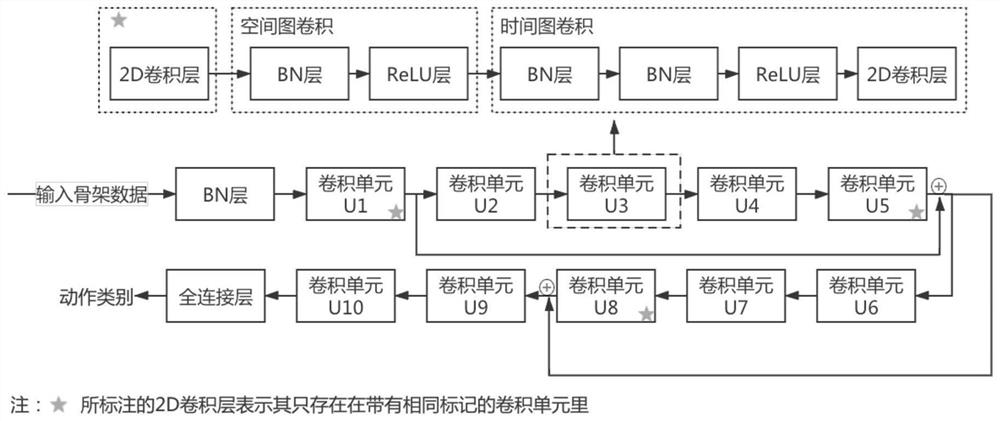Two-stage behavior recognition fine classification method based on graph convolutional network
A convolutional network and subdivision technology, applied in the field of two-stage behavior recognition subdivision, can solve the problem of not classifying highly similar actions well, and achieve the effect of expanding the receptive field and improving the accuracy rate
- Summary
- Abstract
- Description
- Claims
- Application Information
AI Technical Summary
Problems solved by technology
Method used
Image
Examples
Embodiment 1
[0054] One proposed based on the behavior of the present invention is to identify a two-stage network of FIG convolutional fine classification method, disclosed in the experimental data set NTU-RGB + D 60, and the method and the results were compared mainstream. According to mainstream practice, experiments were performed on X-Sub and X-View two benchmark, using Top1 as an evaluation index. This experiment was carried out using only a single embodiment of the data stream (as joint data), and the results compared with only a single stream model.
[0055] Experimental parameters of the invention to:
[0056] Experimental environment for the present invention: processor Intel (R) Xeon (R) CPU E5-2603 v4@1.70GHz, graphics card, an NVIDIA Titan XP 12GB, memory 64GB, operating system Ubuntu 16.04 (64-bit), the programming language Python3.7.4, deep learning framework for PyTorch1.2.0.
[0057] Training and testing process model, a continuous human skeletal joints 300 as input data, i.e....
PUM
 Login to View More
Login to View More Abstract
Description
Claims
Application Information
 Login to View More
Login to View More - R&D Engineer
- R&D Manager
- IP Professional
- Industry Leading Data Capabilities
- Powerful AI technology
- Patent DNA Extraction
Browse by: Latest US Patents, China's latest patents, Technical Efficacy Thesaurus, Application Domain, Technology Topic, Popular Technical Reports.
© 2024 PatSnap. All rights reserved.Legal|Privacy policy|Modern Slavery Act Transparency Statement|Sitemap|About US| Contact US: help@patsnap.com










